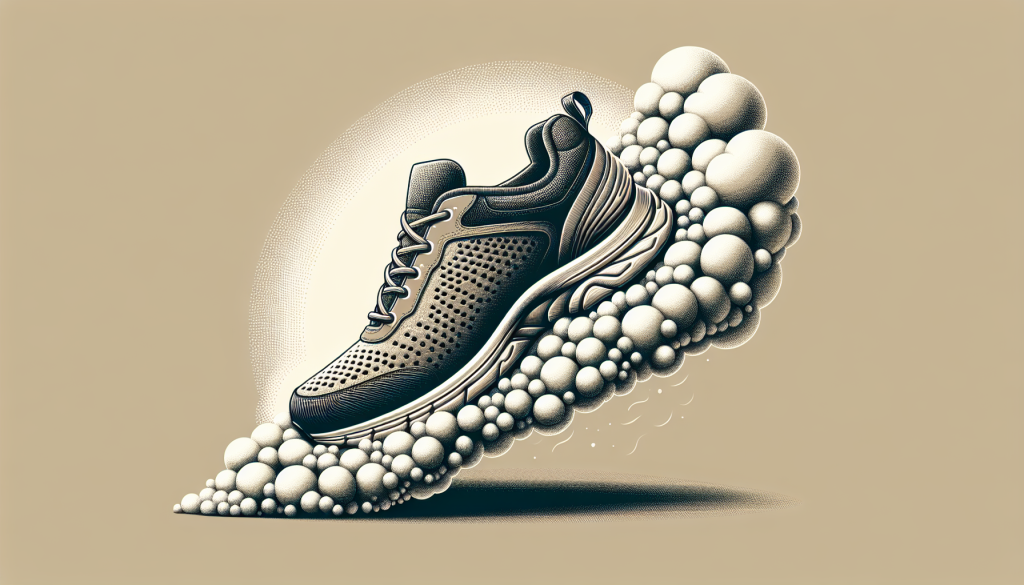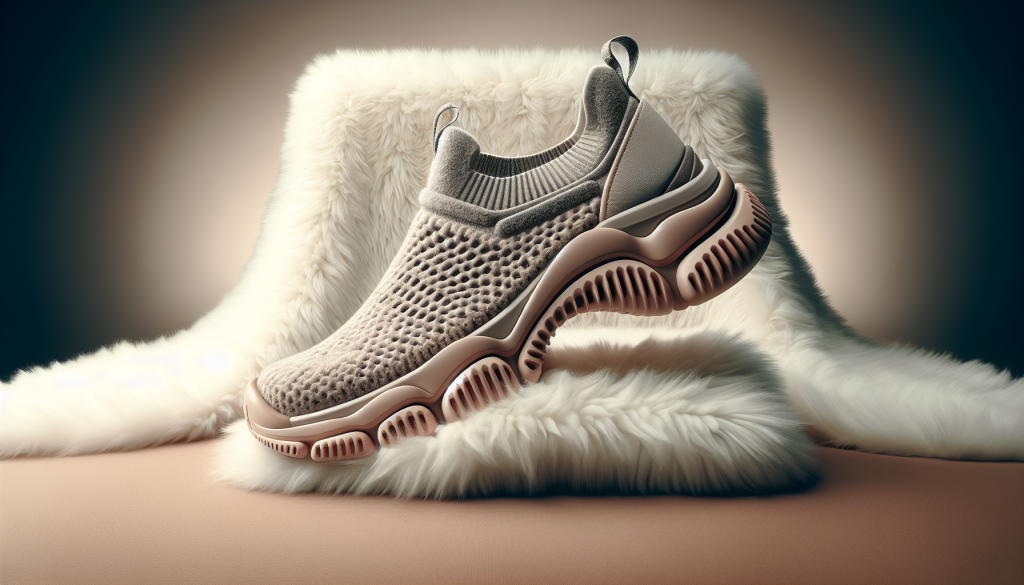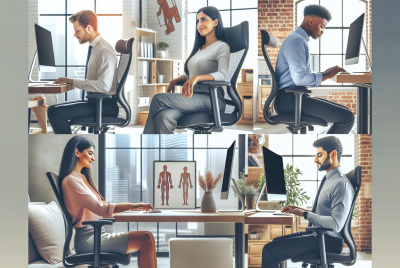Choosing The Right Back Support Shoes For All-Day Comfort
If you’ve ever experienced the discomfort of a sore back after a long day on your feet, then you understand the importance of finding the right back support shoes for all-day comfort. Whether you’re standing for hours at work or just want to stay comfortable during a day of running errands, having the proper footwear can make all the difference. In this article, we’ll explore the key factors to consider when selecting back support shoes and provide helpful tips to ensure you find the perfect pair for your needs. So say goodbye to achy backs and hello to all-day comfort!
Understanding the Importance of Back Support Shoes
The Impact of Improper Footwear on Back Health
When it comes to maintaining a healthy back, many people often overlook the role that footwear plays. The shoes you wear can have a significant impact on your back health, especially if they do not provide adequate support. Improper footwear can lead to poor alignment, excessive stress on the joints and muscles, and ultimately, back pain. That’s why it is crucial to invest in shoes that prioritize back support.
Benefits of Wearing Back Support Shoes
Wearing back support shoes can provide numerous benefits for your overall back health. These shoes are specifically designed to offer the necessary support and stability to promote proper alignment and reduce stress on your back. By wearing back support shoes, you can experience improved posture, reduced back pain, and enhanced overall comfort. These shoes are particularly beneficial for individuals who spend long hours on their feet or engage in physical activities that put strain on the back.
Determining Your Foot Type
Understanding Different Foot Types
Before choosing back support shoes, it is essential to understand the different types of feet. The three main foot types are:
- Normal foot: A normal foot has a natural arch and evenly distributes weight across the foot.
- Flat foot: A flat foot lacks a visible arch and tends to roll inward (overpronation) when walking or running.
- High arch foot: A high arch foot features a prominent arch, causing the weight to be concentrated on the heel and the ball of the foot.
Identifying Your Foot Type
To determine your foot type, you can perform a quick and straightforward test. Wet your feet and stand on a piece of paper or a flat surface that will leave a footprint. Review the footprint and observe the arch shape and weight distribution. This test will help you determine whether you have a normal foot, flat foot, or high arch foot. Identifying your foot type is crucial in finding the right back support shoes that cater to your specific needs.

Considerations When Choosing Back Support Shoes
Arch Support
One of the essential factors to consider when selecting back support shoes is the level of arch support they provide. Arch support helps maintain proper foot alignment and reduces strain on the back. For individuals with flat feet, shoes with built-in arch support can help correct overpronation and provide stability. On the other hand, individuals with high arches may require shoes with additional cushioning to absorb excess impact.
Shock Absorption
The shoes you choose should have proper shock absorption capabilities. Shock absorption helps cushion the impact of each step, reducing the stress on your back and joints. Look for shoes with features like gel cushioning, air pockets, or foam midsoles, as these can provide excellent shock absorption properties.
Cushioning
Having adequate cushioning in your back support shoes is crucial for optimal comfort. Cushioning helps to absorb the impact of each step, reducing the strain on your feet and back. Look for shoes with ample cushioning, especially in the heel and forefoot areas. Memory foam and EVA foam are commonly used materials that provide exceptional cushioning.
Heel Support
Good heel support is essential for back support shoes. The heel counter of the shoe should be firm and sturdy to keep your heel in place and maintain proper alignment. A well-supported heel helps distribute weight evenly and prevents excessive strain on the back.
Toe Box Size
The size of the toe box is another consideration when choosing back support shoes. It is important to have enough room in the toe box for your toes to move comfortably. Shoes that are too tight can squeeze your toes and lead to discomfort and potential back problems. Opt for shoes with a roomy toe box that allows your toes to spread naturally and prevents any unnecessary pressure.
Flexibility
While support is crucial, it is equally important for back support shoes to have some level of flexibility. A shoe that is too stiff can restrict natural foot movement and lead to discomfort. Look for shoes that provide a balance between support and flexibility, allowing your feet to move naturally while offering the necessary stability for your back.
Breathability
The breathability of back support shoes is another important factor to consider, especially if you plan on wearing them for long periods. Shoes with breathable materials and mesh panels help promote air circulation and prevent excessive sweating and odor. This not only enhances comfort but also protects against bacterial or fungal infections.
Sole Material
The sole material of back support shoes plays a significant role in providing stability and support. Look for shoes with durable and shock-absorbing materials, such as rubber or EVA. Additionally, consider the traction provided by the outsole to ensure slip resistance and security on various surfaces.
Weight and Durability
When choosing back support shoes, consider their weight and overall durability. Lightweight shoes are more comfortable to wear for extended periods, especially if you are on your feet for long hours. Additionally, investing in durable shoes ensures that they will withstand the demands of daily wear and won’t need frequent replacement.
Style and Aesthetics
While the functionality and comfort of back support shoes are paramount, it is also important to find a style that suits your personal preferences. Fortunately, many brands now offer a wide range of stylish options that provide the necessary support without compromising on aesthetics. From athletic shoes to casual and dress shoes, you can find back support shoes that fit your style and complement your wardrobe.
Finding the Right Fit
Importance of Properly Fitted Shoes
Finding the right fit is crucial when it comes to back support shoes. Ill-fitting shoes can not only lead to discomfort but also contribute to poor posture and back pain. Wearing shoes that are either too big or too small can affect your gait and put unnecessary stress on your back and feet. That’s why it is essential to ensure your shoes fit correctly.
Measuring Your Feet
To determine the correct shoe size, start by measuring your feet with a tape measure or ruler. Measure both the length and width of each foot. Remember to measure your feet in the evening when they are at their largest due to swelling that occurs throughout the day.
Choosing the Correct Shoe Size
When choosing the correct shoe size, go by the measurements of your larger foot. Take into consideration both the length and width measurements. Different shoe brands may have slight variations in sizing, so it’s best to refer to the brand’s specific size chart for guidance. If your measurements fall between sizes, opt for the larger size to ensure a more comfortable fit.
Trying On Multiple Options
Once you have determined your shoe size, it’s important to try on multiple options before making a final decision. Different shoe brands and models can vary in terms of fit and comfort. Trying on various shoes will allow you to assess their overall feel and determine which pair provides the best support for your back and feet.
Considering Custom Orthotics
If you have specific foot conditions or require additional support, custom orthotics may be worth considering. Custom orthotics are specially designed insoles that are tailored to your specific foot needs. They can provide additional arch support, heel cushioning, and overall comfort. Consult with a podiatrist or orthopedic specialist to determine if custom orthotics are necessary for your back support shoes.

Choosing Back Support Shoes for Specific Activities
Work Shoes
For individuals who spend long hours on their feet at work, it is crucial to choose back support shoes that offer maximum comfort and support. Look for features such as extra cushioning, shock absorption, and arch support. Slip-resistant outsoles are also important for those working in environments with slippery surfaces.
Athletic Shoes
Athletic activities often involve repetitive motions and high impact, making proper back support essential during sports and workouts. When choosing athletic shoes, consider the specific activity you will be engaging in. Opt for shoes that provide excellent shock absorption, stability, and flexibility to support your back during dynamic movements.
Casual Shoes
Casual shoes are a popular choice for everyday wear, and they can also provide adequate back support. Look for casual shoes with cushioned insoles, arch support, and a well-supported heel. A flexible yet supportive sole is also important for those long walks or errands.
Dress Shoes
Even when dressing up for more formal occasions, you don’t have to sacrifice back support. Look for dress shoes that are designed with comfort in mind. Choose shoes with memory foam or cushioned insoles, low heels, and proper arch support. Opt for styles that have a roomy toe box to prevent any discomfort.
Understanding Different Types of Back Support Shoes
Orthopedic Shoes
Orthopedic shoes are specifically designed to support various foot conditions and promote proper alignment. They offer features such as extra cushioning, arch support, and deep heel cups. Orthopedic shoes are an excellent choice for individuals with specific foot conditions that require specialized support.
Arch Support Shoes
As the name suggests, arch support shoes provide targeted support to the arch of the foot. They help maintain proper alignment, especially for individuals with flat feet or fallen arches. Arch support shoes feature built-in arch supports or inserts that provide stability and reduce strain on the back.
Motion Control Shoes
Motion control shoes are designed to prevent excessive foot pronation, which can lead to misalignment and back pain. They provide extra support and stability through features such as strong heel counters, firmer midsoles, and structured arch support. Motion control shoes are ideal for individuals with overpronation or flat feet.
Stability Shoes
Stability shoes are a popular choice for individuals with mild to moderate overpronation or flat feet. They offer a balance between cushioning and support, providing stability for the feet and back. Stability shoes usually feature a dual-density midsole, supportive arch, and enhanced cushioning.
Cushioned Shoes
Cushioned shoes are designed to provide maximum shock absorption and comfort. They are ideal for individuals with high arches or those who have sensitive feet. Cushioned shoes feature plenty of padding, a soft midsole, and a flexible design that helps absorb the impact of each step, relieving stress on the back.
Shopping for Back Support Shoes
Researching Brands and Models
Before making a purchase, it is essential to research different brands and models of back support shoes. Look for reputable brands that prioritize comfort and quality. Read online reviews and gather information about the specific features and technologies offered by each brand. This will help you make an informed decision and find the shoes that best meet your needs.
Reading Customer Reviews
Customer reviews can provide valuable insights into the comfort and performance of back support shoes. Take the time to read reviews from other individuals who have purchased the shoes you are considering. Pay attention to any comments about fit, support, and overall satisfaction. This feedback can give you a better idea of whether a particular shoe is right for you.
Visiting Specialty Shoe Stores
Visiting specialty shoe stores can be a great way to get personalized recommendations and professional guidance. These stores often carry a wide range of back support shoes and have staff members who are knowledgeable about foot health and proper shoe fitting. They can measure your feet, assess your gait, and help you find the best back support shoes for your specific needs.
Consulting with Podiatrists
If you have specific foot conditions or concerns, consulting with a podiatrist can provide valuable insights and recommendations. A podiatrist can assess your foot health, analyze your gait, and offer advice on the best types of back support shoes for you. They may also be able to provide custom orthotics or recommend specific shoe brands that cater to your unique needs.
Considering Cost and Budget
When shopping for back support shoes, it’s important to consider your budget. While high-quality shoes may come with a higher price tag, they are often worth the investment for long-term back health. However, there are also affordable options available that still provide adequate support. Strike a balance between quality, comfort, and your budget when making your final purchasing decision.
Taking Care of Your Back Support Shoes
Cleaning and Maintenance
Proper cleaning and maintenance can prolong the lifespan of your back support shoes. Follow the manufacturer’s guidelines for cleaning and care. If your shoes get dirty, wipe them down with a damp cloth and mild soap. Avoid submerging them in water or putting them in the washing machine, as this can damage the shoe’s structure and support.
Replacing Worn-Out Shoes
Over time, back support shoes will start to show signs of wear and tear. It is important to replace worn-out shoes when they no longer provide the necessary support. Inspect your shoes regularly for any signs of deterioration, such as cracks in the sole or worn-out cushioning. Generally, it is recommended to replace back support shoes every 6-12 months, depending on the frequency of use and wear.
Rotating Between Multiple Pairs
Rotating between multiple pairs of back support shoes can help prolong their lifespan and provide variety in support. Wearing the same pair of shoes every day can cause them to wear out more quickly and potentially lead to discomfort. By alternating between different pairs, you allow each pair to breathe and recover, ensuring that they continue to provide optimal support for your back.
Seeking Professional Advice
Consulting with a Podiatrist or Orthopedic Specialist
If you are experiencing chronic back pain or have specific concerns about your back health, it is advisable to seek professional advice from a podiatrist or orthopedic specialist. These healthcare professionals can perform a thorough examination, identify underlying causes, and recommend appropriate treatments or interventions. They can also provide tailored advice on selecting the right back support shoes for your specific condition.
Getting a Professional Gait Analysis
A professional gait analysis can provide valuable insights into your walking or running mechanics. By analyzing your gait, a specialist can identify any abnormalities or imbalances that may be contributing to your back pain. This analysis can help guide you in choosing back support shoes that address your specific gait issues and promote proper alignment.
Custom Orthotics and Insoles
In some cases, custom orthotics or insoles may be recommended to provide additional support and alignment correction. These are specially designed inserts that are tailored to your individual foot needs. Custom orthotics can be particularly beneficial for individuals with specific foot conditions, such as flat feet or high arches. A podiatrist or orthopedic specialist can determine if custom orthotics or insoles are necessary to enhance the support provided by your back support shoes.
Conclusion
Investing in back support shoes is a crucial step towards maintaining a healthy back and overall well-being. By understanding the impact of improper footwear on back health and considering factors like arch support, shock absorption, and cushioning, you can find shoes that provide the necessary support and comfort. Determining your foot type, finding the right fit, and considering specific activities will further enhance the effectiveness of your back support shoes. Remember to take care of your shoes, replace them when necessary, and seek professional advice when needed. With the right back support shoes, you can prioritize your back health and enjoy comfort throughout the day.




